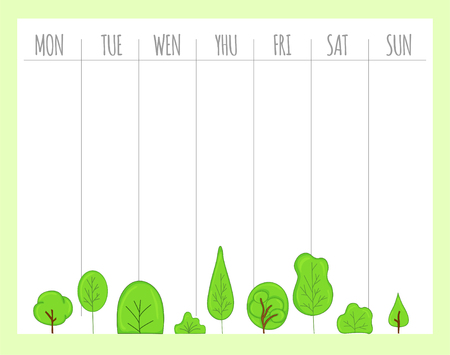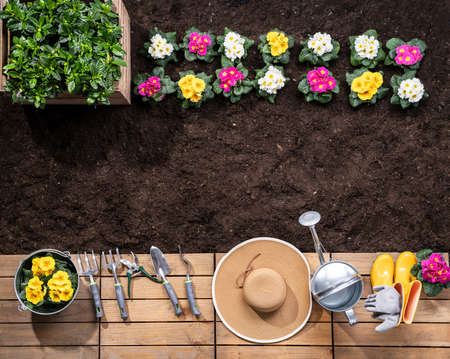Introduction to Seed Starting in the UK Climate
Starting seeds in the United Kingdom presents a distinctive set of challenges and opportunities, shaped by the nation’s variable seasonal weather and diverse microclimates. The British climate is characterised by unpredictable temperature shifts, frequent rainfall, and varying daylight hours across regions. These factors make it essential for gardeners and growers to approach seed starting with careful planning, meticulous labelling, and consistent record-keeping. Unlike more predictable climates, the UK requires particular attention to timing and adaptability to ensure healthy seedlings and a productive growing season. By understanding these unique aspects and integrating structured planning into your gardening routine, you can optimise your chances of success across the changing British seasons.
2. Effective Labelling for British Allotments and Gardens
Proper labelling of seeds, trays, and rows is essential for successful gardening across the varied British seasons. With the UK’s unpredictable weather—frequent rain, dampness, and fluctuating temperatures—it is crucial to choose materials and methods that withstand these challenges while ensuring your records remain clear and legible.
Best Materials for Weather-Resistant Labelling
Not all labels are created equal when exposed to the British climate. Below is a comparison of common labelling materials and their suitability for allotments and gardens:
| Material | Weather Resistance | Clarity | Longevity | Notes |
|---|---|---|---|---|
| Plastic Plant Labels | High | Excellent (with permanent marker) | Good (can be reused) | Avoid cheap ones that become brittle; wash and reuse each season. |
| Wooden Stakes/Lolly Sticks | Moderate | Good (initially) | Poor (may rot or fade quickly) | Best for short-term use; treat with outdoor varnish for longer life. |
| Slate/Stone Markers | Excellent | Very Good (with paint pen) | Excellent | Aesthetically pleasing but more expensive; ideal for perennials. |
| Zinc/Metal Tags | Very High | Good (engraved or with paint pen) | Excellent | Can be reused for years; won’t degrade in wet conditions. |
| Popsicle Sticks/Cardboard | Poor | Poor (smudges easily) | Poor (disintegrates in rain) | Not recommended for outdoor use in the UK. |
Permanent Marking Techniques Suited to the UK Climate
- Permanence: Use UV-resistant permanent markers such as Sharpie Extreme or garden-specific paint pens. Standard ink will often fade or wash away after just a few rainy days.
- Lamination: For longer-lasting results, consider laminating paper labels or using waterproof label tape. Attach these securely to sticks or trays.
- Coding Systems: Develop simple codes or abbreviations for quick identification, especially if space is limited on small labels.
Troubleshooting Common Labelling Issues in Britain
- Mould and Fading: Inspect labels regularly throughout the season, especially after heavy rainfall or prolonged damp spells. Replace any that have become illegible.
- Pests: Some rodents and birds may disturb or remove labels. Insert labels deep enough into the soil or attach them securely to stakes above ground level.
Sustainable Labelling Practices for Eco-Conscious Gardeners
If you wish to minimise waste, opt for reusable slate markers or metal tags, which can be cleaned at season’s end. Avoid disposable plastics wherever possible, choosing biodegradable alternatives only where longevity is not critical.
The right approach to labelling ensures your seed starting schedule remains organised and traceable from early spring sowings through to late autumn plantings, regardless of what the British weather brings. Consistent, weatherproof labelling supports better record-keeping and smoother seasonal transitions year after year.

3. Practical Record-Keeping Strategies
Maintaining an organised seed starting schedule is essential for British gardeners who wish to maximise their seasonal success. Effective record-keeping not only helps track progress but also fosters learning from previous experiences. There are several common approaches in the UK, ranging from traditional handwritten logs to more modern digital solutions.
Paper-Based Journals: The Traditional Approach
Many British gardeners prefer paper-based journals, often using sturdy notebooks or pre-formatted garden diaries available at local garden centres. These journals typically feature sections for seed varieties, sowing dates, germination rates, and notes on weather conditions or pest problems. Recording such details by hand encourages regular review and offers a tactile sense of progress throughout the season.
Customising Your Logbook
To make the most of a paper journal, it’s wise to dedicate pages to each crop and align entries with the British gardening calendar—reflecting the unique timing of spring sowings, summer growth, autumn harvests, and winter preparations. Many gardeners supplement their records with sketches or clippings from local planting guides, which offer advice tailored to specific UK climates and micro-regions.
Digital Seed Logs: Modern Convenience
For those who prefer technology, digital tools like spreadsheets or gardening apps provide efficient ways to log and analyse data. Popular UK-based apps may include region-specific reminders and weather integration, helping you adjust plans according to changing conditions. Digital logs make it easier to compare year-on-year results and share insights within local gardening groups online.
Integrating Local Planting Guides
A key strategy is to reference respected sources such as the Royal Horticultural Society’s planting calendars or county-level extension services when planning your seed starting schedule. By integrating these guidelines into your records—whether digitally or on paper—you can better anticipate ideal sowing windows, track arrivals of new seeds, monitor germination rates, and document any mistakes for future improvement.
Learning from Mistakes
No season is ever perfect; therefore, it’s crucial to note both successes and failures. Recording instances of poor germination, incorrect labelling, or weather-related setbacks will help refine your approach for subsequent years. Over time, a well-maintained log becomes a valuable resource—rooted in personal experience and enriched by trusted British horticultural wisdom.
4. Planning Your Seed Starting Calendar through British Seasons
Successfully starting seeds in the UK demands a well-structured approach, taking into account the nuances of British weather patterns, regional frost dates, and fluctuating daylight hours. Creating a bespoke seed-starting schedule not only maximises germination rates but also ensures healthy plant development throughout spring, summer, autumn, and winter.
Understanding the British Growing Year
The UK’s temperate climate means timing is everything. Planning your calendar begins with identifying your local last and first frost dates, as these are critical for both indoor and outdoor sowing. Daylight hours vary greatly between Scotland and southern England, so it’s essential to tailor your timeline accordingly.
Key Considerations for Your Calendar
- Frost Dates: Consult the Met Office or local gardening groups for accurate regional data.
- Daylight Hours: Take note of increasing light from March onwards and its impact on seedling growth.
- Microclimates: Urban gardens may be warmer than rural areas; adjust schedules as needed.
- Succession Sowing: Plan staggered plantings for continual harvests across seasons.
Sample Seed-Starting Timeline Aligned with British Seasons
| Season | Key Tasks | Typical Crops |
|---|---|---|
| Winter (Dec-Feb) | Sow chillies, aubergines, and onions indoors using heated propagators; prepare records for upcoming season | Chillies, Aubergines, Onions |
| Early Spring (Mar-Apr) | Sow tomatoes, peppers, brassicas indoors; harden off early seedlings; begin labelling trays | Tomatoes, Peppers, Cabbage |
| Late Spring (May) | Sow beans, courgettes outdoors post-frost; transplant indoor seedlings; maintain detailed logs of varieties and dates | Beans, Courgettes, Sweetcorn |
| Summer (Jun-Aug) | Sow succession crops like lettuce and radishes; plan autumn sowings; update records with performance notes | Lettuce, Radishes, Carrots |
| Autumn (Sep-Nov) | Sow overwintering crops such as broad beans and garlic; review season’s notes; clean labels for reuse | Broad Beans, Garlic, Spinach |
Regional Adjustments: North vs South
- Northern gardeners may need to start seeds indoors earlier due to shorter growing seasons and later last frosts.
- Southern growers benefit from slightly longer seasons—adjust outdoor sowings forward by 1–2 weeks where appropriate.
Integrating Record-Keeping and Labelling with Your Schedule
A robust calendar works best when paired with meticulous labelling and record-keeping. As you plan each sowing date, ensure all trays and modules are labelled clearly using weatherproof materials. Log every detail—date sown, variety, source—in a dedicated gardening journal or digital spreadsheet. This ongoing documentation will help refine your calendar year after year as you adapt to changing British weather patterns.
5. Adapting to Local Microclimates and Traditions
Successfully managing your seed starting schedule in the UK demands an understanding that extends beyond official sowing dates; it is crucial to adapt to local microclimates and the time-honoured gardening traditions unique to Britain. Each region—from the balmy south-west of Cornwall to the brisk uplands of Scotland—offers distinct climatic quirks, often differing dramatically from general weather forecasts. This makes it essential for gardeners to observe, record, and adjust their practices according to their immediate environment.
Incorporating Community Knowledge
British gardening is deeply rooted in community spirit. Allotment associations, neighbourhood gardening groups, and even casual conversations over garden fences are invaluable sources of practical advice tailored to your locality. When planning your seed starting calendar, consult with neighbours or local gardening clubs about what has worked historically in your area. These interactions can alert you to subtle frost pockets, prevailing winds, or sheltered nooks ideal for early sowings, enriching your record-keeping with insights not found in standard guides.
Neighbourly Advice and Heritage Techniques
The wisdom passed down through generations—such as timing seed sowing by traditional markers like the flowering of native plants (e.g., when hawthorn blossoms)—often proves remarkably accurate. Record these phenological cues alongside formal sowing dates in your gardening journal or digital planner. This integration of folk knowledge with modern record-keeping offers a robust strategy for adapting to unpredictable British weather.
Maximising Space: Containers and Small Gardens
Given the prevalence of compact gardens and urban spaces across Britain, maximising limited growing areas is an essential skill. Embrace container gardening by selecting varieties bred for small spaces and recording which seeds thrive best under such conditions. Utilise vertical structures, window boxes, and hanging baskets to increase capacity without sacrificing quality. Document your successes and challenges each season—this enables refined scheduling and better selection year after year.
Ultimately, blending meticulous labelling and record-keeping with neighbourly exchange and historic British gardening practices ensures a truly resilient seed starting plan, responsive both to local climate realities and the collective wisdom of your community.
6. Reviewing and Adjusting Your Seed-Starting Approach Annually
As the British gardening year draws to a close, it is crucial to invest time in reviewing your seed-starting process to ensure continual improvement. Reflecting on both triumphs and setbacks from the previous season provides valuable insights that can directly enhance your labelling, record-keeping, and planning strategies.
End-of-Season Reflection: Analysing Outcomes
Begin by consulting your records—notes, charts, and labels—to assess which seed varieties thrived and which struggled. Consider factors unique to the British climate, such as late frosts, wet springs, or prolonged dry spells, and how these affected germination rates and plant health. Were certain crops started too early or late for your region? Did particular labelling methods make it easier or harder to track progress?
Refining Labelling Techniques
Evaluate the clarity and durability of your labels after months outdoors. If ink faded in rain or tags became illegible, trial more robust materials or waterproof markers next season. Clear, resilient labelling helps avoid confusion and supports more accurate record-keeping.
Enhancing Record-Keeping Practices
Assess whether your current system—be it a paper journal, spreadsheet, or garden diary—provided sufficient detail to inform future decisions. Did you consistently note sowing dates, weather conditions, and yield results? Upgrading your method to include specific observations for each variety can lead to more tailored adjustments in subsequent years.
Adapting Planning Strategies for British Seasons
Use your reflections to fine-tune next year’s sowing schedule in alignment with local seasonal patterns. Perhaps earlier indoor starts benefit heat-loving plants during unpredictable spring weather, or staggered sowings maximise harvest windows. Incorporate lessons learned into your calendar for even greater success.
By systematically reviewing and adjusting your seed-starting approach annually, you can build upon each year’s experiences. This cycle of evaluation and refinement ensures that your labelling, record-keeping, and planning methods evolve to meet the unique demands of British gardening—setting you up for more productive seasons ahead.


